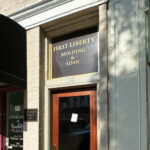When it comes to life in America, our homes, like our cars, will never go out of favor.
New home building and older home remodeling and fix-ups have become a mainstay of the American economy, especially at the high end. Add in second and third homes being bought these days, and the artisan (specialty trade) contractor field is having a field day, busier than ever, whether working for a general contractor or on their own. Construction-related work appeals to a wide spectrum of those “who can think with their hands.”
The astute among these, of course, will understand the value of or be required to carry general liability and related coverages. Agents then must seize upon the opportunity to fill this growing need, safely and smartly.
We define the artisan contractor as a small- to medium-sized commercial or residential construction-related business with an owner-proprietor and generally no more than two or three employees. Annual revenues can vary, but $500,000, perhaps $1 million, would be the upper limit. The list of applicable services is long and includes familiar trades like plumber, roofer, landscaper, electrician, mason, floor coverer, painter, appliance installer, tree trimmer, etc.
One key to selling the artisan contractor book of business is like any other, go heavy on the coverages, light on the restrictions, deductibles and premiums. Generally, those entities are looking for lower deductibles and the lowest possible premium. The better wholesaler/underwriter GL programs will be without sunsets clauses and will not be modified occurrence. Limits available generally run $1 million occurrence, $2 million aggregate, with umbrellas (as high as $25 million) worth offering.
On many of their assignments, the artisan contractor will be working through a general contractor. Most policies will allow this, as well as the artisan itself hiring subcontractors.
When the entity has a claims history (or typical project) that precludes standard lines, the excess and surplus marketplace serves as a valuable safety valve for agents. While most of our clients are handled without coverage enhancements and additional coverage lines, possibilities include inland marine (up to about $20,000 coverage), miscellaneous tools (up to about $25,000 coverage), lost key coverage or “care, custody and control” endorsements. Scheduled tools endorsements are available, but usually are not needed by this group. Vehicle coverage can usually be handled with standard carriers.
Marketing
Only half tongue-in-cheek, we recommend that agents watch for service trucks (ladders dangling off the roof) at the proverbial donut shops, coney islands or neighborhood lunch counters; and bring plenty of business cards with you. Actually, the artisan contractors are a fun group to market to. In addition to trade associations, every area has ongoing home improvement and home construction shows, business-to-business and those where contractors/remodelers show their wares and skills to consumers. This is an easy group of folks to talk up, and we all have experience dealing with this business group.
Problems do arise
It goes with the territory. An elderly customer trips over a pipe wrench left behind. The contractor’s truck takes a chunk out of the siding on the way to the back yard. Wires cut that should not have been cut during an installation.
In today’s world, the complexity and price range of modern residential or commercial construction can considerably raise the liability stakes. Values are one factor. Messing up a ceramic floor or custom faux painting; land grading that disturbs water drainage on neighboring properties; dropping the latest and greatest artisan stove — “minor” issues can all add up to big bucks.
Construction defect litigation is on the rise, and tends to impact the entire “chain” of those contributing to any given home or building. Environmental and pollution issues can be especially pesky. While the construction community as a whole better understands issues like asbestos, lead paint, mold or “sick building” syndrome, the less informed or less alert artisan can go astray in those areas, committing errors of commission as well as omission, by not recognizing a problem before them.
Consider someone in an office environment made sick by the cements used to put down a new commercial carpet or floor. Such materials, even used in providing the service, may be considered pollutants and not covered by the GL policy. While it depends on each entity’s specific activities, we are doing more cross-selling of environmental or pollutant liability coverage with this group of businesses.
Managing risk
The independent agent has an invaluable risk management role to fulfill with artisan contractors. Take the time to know what your client is up to and explain how to avoid possible claims of liability. Even a modest claim could put someone out of business.
With this group, education is key, as few artisans — like many of their agents — are even aware that special coverage exists. This extra effort to learn the artisan contractor’s business, alerting them to potential exposures, will pay dividends as these businesses grow.
Rich Gobler is a commercial lines underwriting manager in the San Francisco office of Burns & Wilcox. He can be reached at (800) 442-1496 or via e-mail at rlgobler@burns-wilcox.com.
Was this article valuable?
Here are more articles you may enjoy.


 Hyundai, Kia Agree to Retrofit 7 Million Vehicles to Address Theft Concerns
Hyundai, Kia Agree to Retrofit 7 Million Vehicles to Address Theft Concerns  Son of Ponzi-Accused Georgia Building & Loan Founder Now an Insurance Agent
Son of Ponzi-Accused Georgia Building & Loan Founder Now an Insurance Agent  Three Top P/C Insurers Account for Most of Insurance AI Patents
Three Top P/C Insurers Account for Most of Insurance AI Patents  State Insurance Legislators ‘Greatly Disturbed’ by Trump AI Regulation Order
State Insurance Legislators ‘Greatly Disturbed’ by Trump AI Regulation Order 


